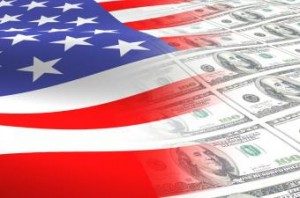 On Thursday afternoon, President Trump instituted import tariffs on foreign steel and aluminum. Calling the tariffs a push back against foreign competitors’ “assault on our country,” President Trump signed off on a 25 percent tariff on imported steel and a 10 percent tariff on imported aluminum. The tariffs are set to go into effect in 15 days, with Canada and Mexico exempted while the U.S. negotiated with those countries on possible alterations to the North American Free Trade Agreement. President Trump also indicated that other countries could be exempted from the tariffs on a case-by-case basis.
On Thursday afternoon, President Trump instituted import tariffs on foreign steel and aluminum. Calling the tariffs a push back against foreign competitors’ “assault on our country,” President Trump signed off on a 25 percent tariff on imported steel and a 10 percent tariff on imported aluminum. The tariffs are set to go into effect in 15 days, with Canada and Mexico exempted while the U.S. negotiated with those countries on possible alterations to the North American Free Trade Agreement. President Trump also indicated that other countries could be exempted from the tariffs on a case-by-case basis.
“The actions we’re taking today are not a matter of choice, they’re a matter of necessity,” President Trump said.
House Speaker Paul Ryan criticized the move in a media statement, saying, “We are extremely worried about the consequences of a trade war and are urging the White House to not advance with this plan. The new tax reform law has boosted the economy and we certainly don’t want to jeopardize those gains.”
Commerce Secretary Wilbur Ross has publically downplayed the potential negative impact on American industries during an appearance on CNBC last week, where he used a can of Campbell's Soup as an example of a product that would theoretically see a price increase of less than a cent due to the tariffs. White House trade adviser Peter Navarro also spoke in support of the move, calling it a “courageous and tough decision.”
"I'm encouraged, I really am and I think it gives us a chance to basically reboot, get jobs back to West Virginia, back to America," said Sen. Joe Manchin (D-West Virginia). "I'm excited about that."
Tom Donohue, President and CEO of the U.S. Chamber of Commerce, spoke out against the tariffs, warning that they could spark a trade war and diminish the impact of the tax relief signed into law by the president a few months ago. Donohue said the tariffs could “directly harm American manufacturers, provoke widespread retaliation from our trading partners, and leave virtually untouched the true problem of Chinese steel and aluminum overcapacity."
The National Association of Homebuilders announced their opposition to the proposed tariffs on Thursday of last week, warning that the increased steel costs would, in turn, raise construction costs, which would then further drive up already inflated home prices. The planned tariffs could add 25 percent to steel prices and 10 percent for aluminum from foreign suppliers. This would come atop tariffs the President imposed on Canadian lumber companies in April 2017, which also affected the home construction industry here in the States. According to Bloomberg data, lumber prices have increased by 31 percent since those tariffs were imposed.
Randy Noel, Chairman of the NAHB, said in a statement that “Given that home builders are already grappling with 20 percent tariffs on Canadian softwood lumber and that the price of lumber and other key building materials are near record highs, this announcement by the president could not have come at a worse time.”
Lawrence Yun, Chief Economist of the National Association of Realtors, said in a statement, “Tariffs could measurably raise the cost of building materials and hinder home construction of affordable homes.”
Rick Schumacher, Editor and Publisher of the LBM Journal, which covers the lumber and building materials industry, told Realtor.com, “It hurts homebuyers. It creates uncertainty ... and any uncertainty is bad."
According to a survey of economists by the University of Chicago Booth School of Business, 93 percent of those surveyed either "Disagreed" or "Strongly Disagreed" with the statement, “Adding new or higher import duties on products such as air conditioners, cars, and cookies—to encourage producers to make them in the U.S.—would be a good idea.”

 DSNews The homepage of the servicing industry
DSNews The homepage of the servicing industry









